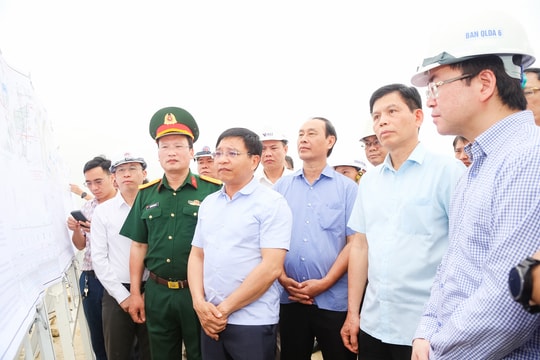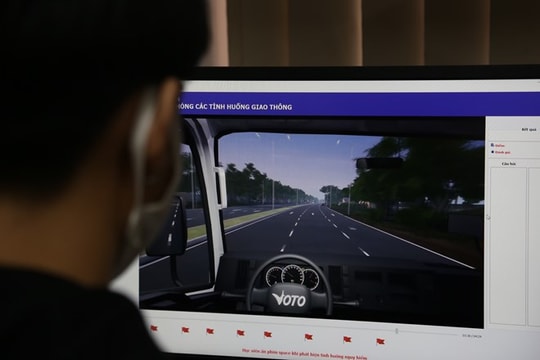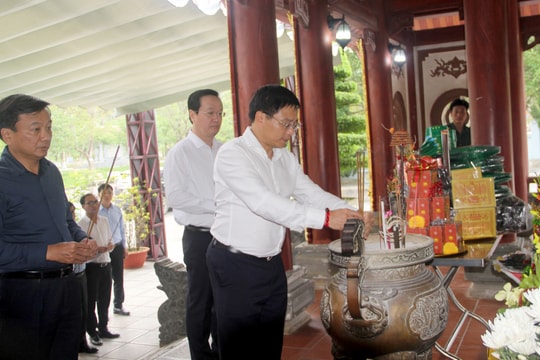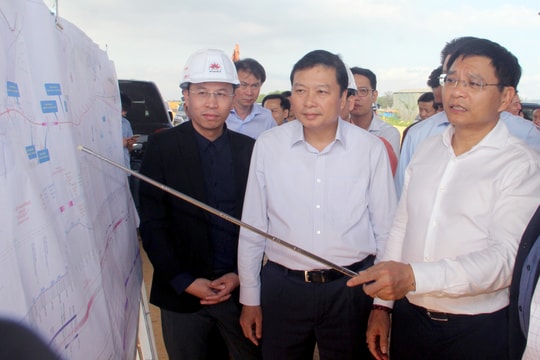Deputy Minister Nguyen Hong Truong explains the comparison of BOT fees
According to Deputy Minister of Transport Nguyen Hong Truong, in the process of building a financial plan, the lowest average level is always used as the starting price for the toll collection. The toll level must be set so that the economy can bear it, especially the transport enterprises.
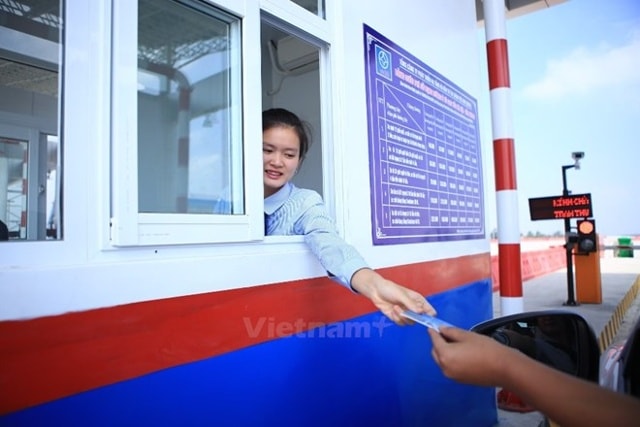 |
| The current toll collection at BOT stations is very high, beyond the tolerance of people and businesses because investors have to pay back capital to ensure financial solutions. |
“Vietnam has set a low average level compared to other countries in the region and the world to set that fee level, but it can be said that this is a relative comparison, not an absolute one,” Deputy Minister Nguyen Hong Truong affirmed.
VietnamPlus reporter had an interview around this issue.
Comparing low fees is only relative
- A series of infrastructure investment projects in the form of BOT (Build-Operate-Transfer) contracts have created a new look for the transport sector and a way to mobilize socialized capital. However, because of the investors' return on investment, the toll collection at BOT stations is currently very high, beyond the tolerance of people and businesses. What does the Deputy Minister think about this reality?
Deputy Minister Nguyen Hong Truong:To develop the BOT plan, the Ministry of Transport proposed three conditions, including a payback period of 20-30 years, preferably 23-25 years based on the experience of other countries in the world; toll collection level and length of the invested route.
The Ministry of Transport believes that the fee level is the most important factor. How can the fee level be sustained by the economy and especially the transport enterprises? Vietnam has set a low average level for countries in the region and the world to set that fee level.
On that basis, the toll collection time to calculate the length of the road investment will give the total amount from which to form the route, fixed investment rate. The route length according to Circular 159, toll stations are 70km apart, some stations have shorter distance because if 70km will fall into urban areas, so when placing the station, it has been approved by the Ministry of Finance and local authorities.
When building BOT stations within a radius of 50km, there should not be more than 3 stations because at least one vehicle can pass 2 stations a day, rarely 3 stations, and the added fee can be tolerated.
In the process of building a financial plan, the lowest average is always used as the starting price. Currently, the Ministry of Finance agrees with the Ministry of Transport on the price ceiling for expressways that other countries in the region have chosen, Vietnam chooses 2,000 VND/standard vehicle/km. Most expressways are collecting 1,500/km. Only the Hanoi-Hai Phong expressway, the most modern in Southeast Asia, has been invested with a large budget, so it collects 2,000 VND/km. The remaining national highways currently have an average of 35,000 VND/standard vehicle/station.
Some stations proposed to increase the fee to 45,000 VND/trip, including the Hanoi-Hai Phong expressway station and some other expressways that combine many stations into one station, such as Ben Thuy station (Nghe An), to collect instead of a cluster of BOT stations at the same time (Vinh bypass project; Vinh bypass road surface reinforcement project; National Highway 1 upgrade and expansion project, section South of Ben Thuy bridge - Ha Tinh city bypass; intersection project between National Highway 46 and the North-South railway; old Ben Thuy bridge repair project; grade-separated intersection project between National Highway 1 and the old National Highway 8B connection section).
The investor's capital recovery plan is adjusted every 3 years, according to the CPI growth rate, taking the average of those 3 years. Recently, there have been toll stations increasing tolls because most of the BOT projects invested in the 2012-2013 period have increased tolls for 3 years, while CPI has increased in the past 3 years. In some places, the increase is from 35,000-45,000 VND/trip, all calculated according to CPI in that area or region.
In addition, some units have requested an increase, but the Ministry of Transport has not requested it yet. All toll stations will calculate the fee increase after June 1. Thus, basically, the collection is in accordance with regulations and lower than the level prescribed by the Ministry of Finance.
- On what basis does the Ministry of Transport believe that Vietnam's road fees are lower than those of other countries in Southeast Asia?
Deputy Minister Nguyen Hong Truong:The Ministry of Transport has consulted the toll rates of countries in Southeast Asia including Thailand, Singapore, Malaysia, Indonesia, Myanmar. These countries, like Vietnam, have built a toll collection roadmap of 20-25 years, but this can be said to be a relative comparison, not an absolute one.
If we compare absolutely, we have to take into account income levels, but Vietnam is currently still at the low middle income level compared to other countries. If we compare income, we lose, but if we compare absolute numbers between fee levels, Vietnam is low.
For example, Vietnam collects 2,000 VND/km but the revenue is approximately 3,000 USD/year, Thailand collects 3,000 VND/km but the revenue is up to 10,000 USD/year (3 times higher), which proves that Thailand's fee is still cheaper, but if calculated per km, it is still higher than ours.
For example, when developing the Noi Bai-Lao Cai Expressway project, the World Bank proposed a fee of 0.5 USD/km (11,000 VND/km) to lend capital, but people could not bear it. The Ministry of Transport reduced it to 0.1 USD (2,000 VND/km), but if so, it would be impossible to recover the capital because it was a loan, not a preferential aid. If it borrowed, it would have to collect to pay off the debt. The Ministry of Transport proposed that the Government set a fee of 0.1 USD, in which the State would partially support the investment level such as site clearance, resettlement, project management, design, and at the same time allocate half of the capital to VEC and borrow the other half from the bank to bring the price down to 2,000 VND/km, which was accepted.
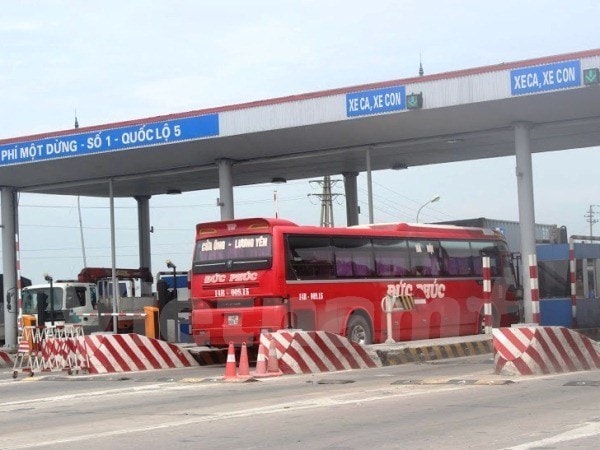 |
| Toll station No. 1 of National Highway 5 has increased its fee to recover capital for the Hanoi-Hai Phong Expressway since April 1. |
If the 1.2 billion USD invested in the route is collected at 0.1 USD/km, when will the debt be paid off? The Ministry of Transport must calculate these figures because other units also check and verify.
Therefore, if we compare the fee collected by total income, it is not necessarily cheaper, but if we talk about absolute numbers, it is cheaper because we are talking about the whole.
Relocating toll stations is not reasonable.
- According to many experts in the field of transportation, in principle, investing in the construction of BOT roads must ensure that people have the right to choose the usage that suits their needs and financial capabilities. However, the bus company has no choice because it is a single BOT road and is "surrounded" by BOT toll stations. How do you view this issue?
Deputy Minister Nguyen Hong Truong:For stations on National Highways, the Ministry of Transport is determined to relocate stations that are not far enough apart, such as stations in the Central region (Tao Xuyen-Thanh Hoa station, located in the city, is now located on a construction slope), Pha Lai station will stop collecting tolls... People living near toll stations such as Hac Tri and Luong Son bridges will have their toll collection reduced to the maximum level in addition to using monthly tickets, and a further % reduction in that monthly ticket so that traveling through the station almost does not affect people's activities.
The Ministry of Transport also requires investors to deduct a portion of profits to offset this amount and not affect the financial plan of the business much because any plan is profitable. Moving forward, there is a more positive solution to prioritize businesses that pay monthly fares to get a deduction, reducing costs for the business.
Regarding toll collection management, it will be strictly controlled through camera control, software can calculate the number of vehicles entering and exiting the station per day, 100% accurate, from there we will know how long or short the toll collection will be. If it is short, there will be solutions to support investors, in case the number of vehicles increases, it is required to shorten the toll collection time to remove the station as soon as possible.
Currently, the unreasonable toll stations have been basically relocated, the only thing left is to modernize the BOT toll collection by solving the traffic speed through toll stations, avoiding congestion and converting all stations to automatic non-stop toll collection. By June 30, 50% of toll gates will be automatic non-stop and strive to have all stations have automatic toll gates by the end of 2017, this will reduce congestion and make the toll collection process more transparent.
- Learning from BOT projects, will the Ministry of Transport build road projects in other forms in the future?
Deputy Minister Nguyen Hong Truong:In a context of rapidly increasing infrastructure demand and limited government and donor budgets, public-private partnerships (PPPs) have the potential to leverage financial resources and expertise from the private sector to improve the quality and expand the coverage of infrastructure services.
Therefore, I affirm that from now on, PPP (public-private partnership) investment will be a priority for the transport sector.
In the near future, the Ministry of Transport will submit to the Government a comprehensive investment package for the construction of the North-South Expressway, mainly in the form of PPP, in which the State supports 20-40% of the capital or more, and the investor invests the remaining capital and is able to exploit and use it over time to recover capital.
- Thank you, Deputy Minister, for the interview.
According to Vietnamplus

.jpg)
